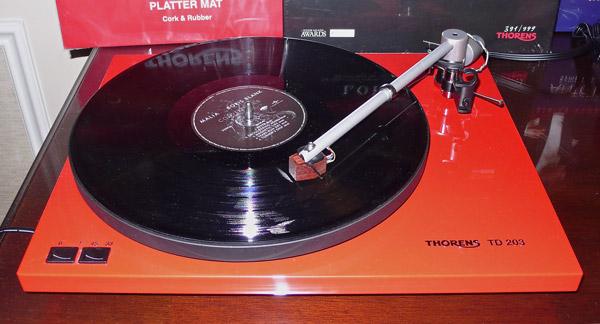I like this TD126-III.
I remember those RDC acrylic Thorens platters. I first saw it in photos of the Thorens Ambiance, then I noticed it was being sold seperately through Clearlight Audio in Germany. I think I had an opportunity to buy one of the last ones for a mere $300 (or thereabouts). Now I wish I had.
As I gather motivation to begin my restoration project on a TD126-III I have, this one gives further inspiration. I agree that the bottom plastic cover needs to be replaced. That piece of plastic seems to be the cheapest part of it. When I had mine up and playing I simply removed the bottom cover entirely and attached rubber feet directly to the heavy wood cross beams of that plinth structure, which is quite solid in its design.
-Steve
That was a common tweak with the 125/126s. A number of enthusiasts would simply remove the bottom cover, as they believed it created a somewhat ‘boomy’ resonance with some of the confined standing wave paths in that enclosed plinth box.
We decided to take it further, however, and really dampen down the resonance pathways on this one.
The platter is indeed a German-made part. I picked up ours at the Thorens service depot in NYC many years ago. It was one of the very last they had, and the one service tech there was raving about how much nicer they were compared to the “bells” (his words). I forget what we paid, but it was not inexpensive.
It’s not a pure composite design, but incorporates some mass-loading and has a dissimilar resonance aborber in it.
As I mentioned above, it’s not the best. But it does a nice job and is marked genuine Thorens for the brand snobs. If you can find one, I would say grab it if the price is not too high.









 Pre-cut damping was already installed by the previous owner so I just replaced the 3 suspensions.
Pre-cut damping was already installed by the previous owner so I just replaced the 3 suspensions.




